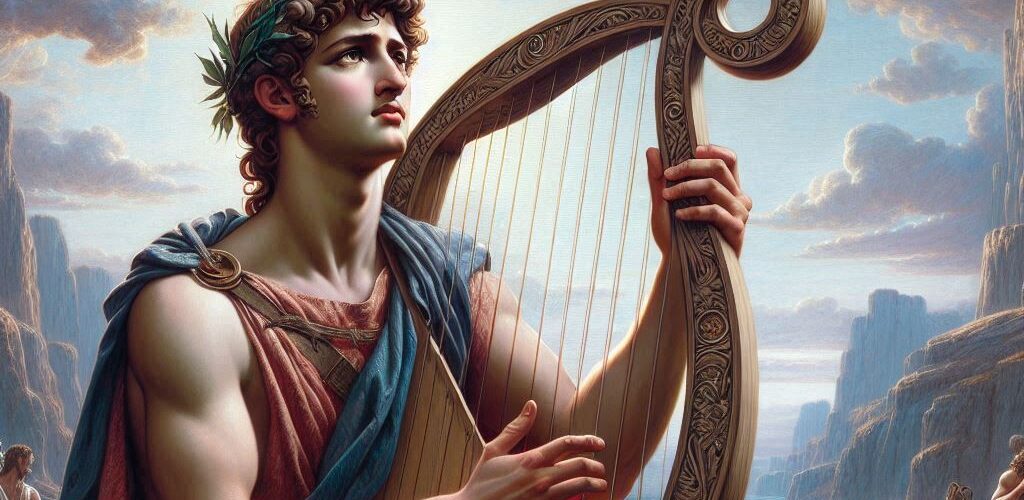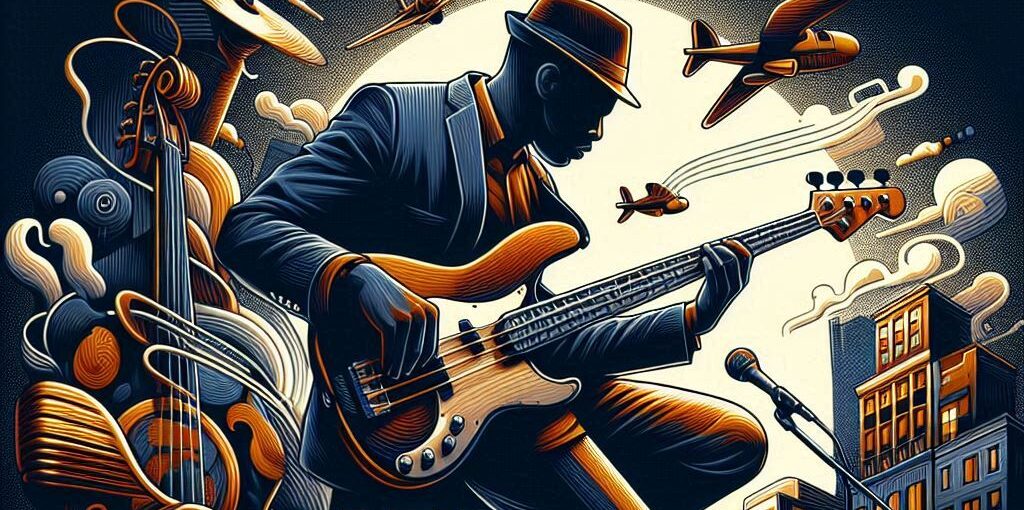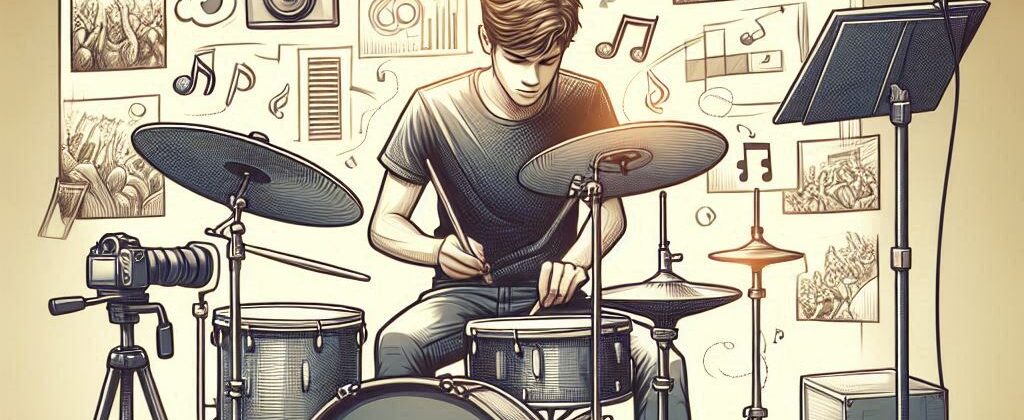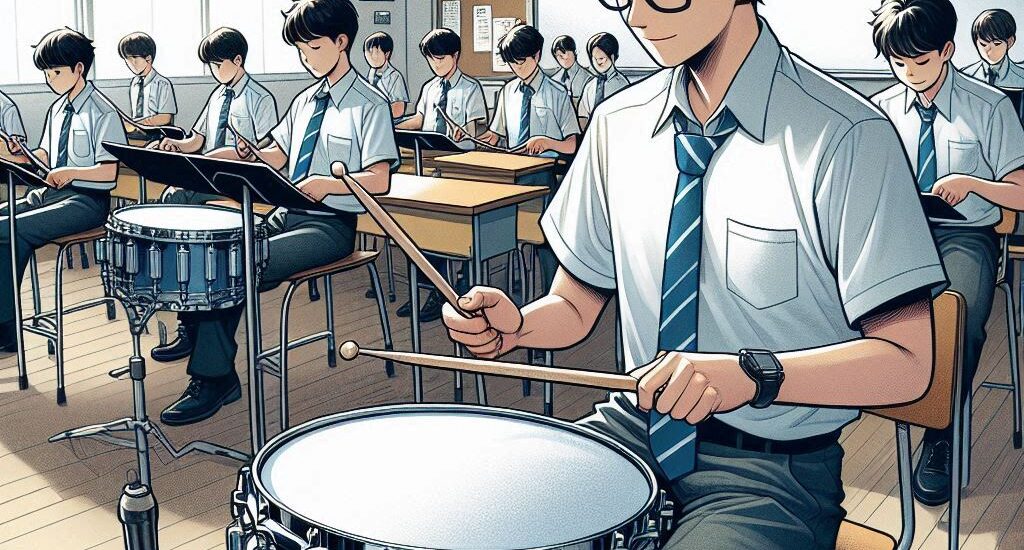Looking back to the origins of the guitar feels like time-traveling to the cradles of civilization. Picture this—ancient Mesopotamia, the cradle of the world, giving rise not just to writing and timekeeping, but also to the earliest forms of stringed instruments. These ancestral instruments, precursors to the guitar, had strings stretched over a frame made from wood or animal skin, hinting at the evolution of musical expression from raw curiosity to complex artistry.
These instruments weren’t just about making noise. Back in the day, they held profound cultural significance. In ancient Egypt, the lute (shown above), a key ancestor of the guitar, was more than a musical accessory; it was a symbol of celebration and worship, often played during religious ceremonies and social gatherings. Imagine being there, the haunting melodies weaving through the air, binding communities and generations together. This highlights how music wasn’t just an art form, but a cultural cornerstone.
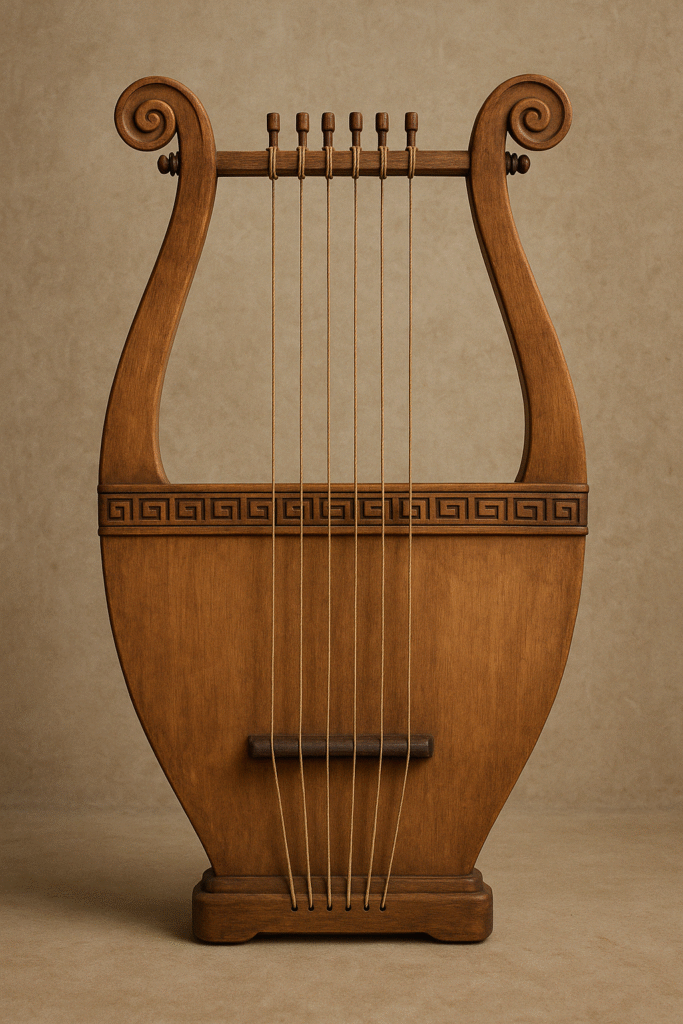
By the time we move to ancient Greece, you’re looking at instruments like the “kithara”—yep, that’s where the name resembles the modern ‘guitar’. Fascinatingly, the Greeks didn’t just see it as an instrument; it was steeped in mythology and lore. Musicians were inspired by gods like Apollo, believed to play the kithara on Mount Olympus, entertaining fellow deities. This gives us an epic lineage of how rooted these instruments are in stories and traditions that shaped societies.
Now, as we glide through time into the Middle Ages, what do we see? An evolution. Stringed instruments adapted, getting more sophisticated with design changes reflecting regional tastes and advancements in craftsmanship. The lute, which you’d spot in tapestries and paintings of the era, was emblematic of the period’s romance and artistic boom. As musicians tweaked string lengths, soundboards, and played with tuning techniques, these early experiments laid the groundwork for what would eventually morph into the guitar.
As a guide on this journey through time, remember that these instruments were the voice of storytelling long before ‘guitar heroes’ of today. They evolved alongside humanity, serving as a melodic thread connecting our shared human experiences across centuries. Just as those early musicians did, explore and experiment—keeping the timeless connection between our past and your present strumming alive.
The Vihuela: A Spanish Legacy That Shaped the Modern Guitar
Venture into 15th-century Spain, and you’ll uncover the vihuela, a stringed instrument that was a game-changer in the world of music. This wasn’t just another string instrument; it was the darling of the Spanish Renaissance, revered by the aristocracy and composers alike for its rich, resonant sound and the versatility it offered to musicians.
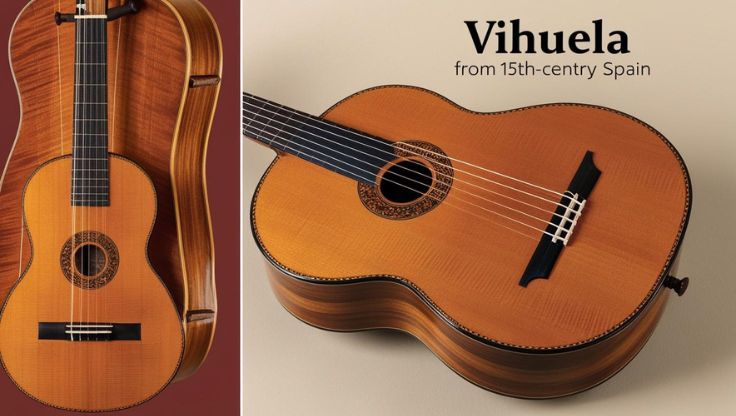
Compared to the familiar lute or its emerging relative, the early guitar, the vihuela boasted a unique shape—somewhere between a guitar and a violin. It was tuned like the lute but had the aesthetic charm of the guitar. With six or seven double strings, it resonated with complexity and depth. Imagine strumming those strings and discovering an orchestra’s worth of music right at your fingertips.
What really sets the vihuela apart is its impact on Spanish musical landscapes. As courtly music was all the rage, composers began crafting elaborate compositions specifically for this instrument. The vihuela was instrumental (pun intended) in establishing Spain’s musical identity during its golden age and spreading its influence across Europe.
Now, here’s where the vihuela’s legacy becomes unmistakable. Over time, aspects of its design and playing technique seeped into what we recognize as the modern guitar. This Spanish legacy instrument breathed new life into musical compositions and shaped the creation of the nylon-stringed classical guitar we cherish today. Knowing this bridges past and present, showing how cultural and artistic choices long ago ripple through modern musical traditions.
If exploring music or the guitar, understanding the vihuela’s impact is invaluable. Its contribution as a stepping stone in musical innovation exemplifies how traditions adapt and inspire. As you play, feel the historical vibrations in your fingertips, knowing you’re part of a lineage crafted by these past maestros.
The Guitar’s Renaissance Transition: Influence of the Classical and Baroque Periods
Stepping into the Renaissance period, the guitar begins to really evolve, both in form and function. It was a transitional time for stringed instruments, thanks to innovative musicians and craftsmen who started shaping guitars with more precision and artistry. The guitar wasn’t just an instrument; it was a canvas for artistic ingenuity, catering to a growing desire for musical complexity and rich, emotive expression.
During this period, the guitar’s role pivoted sharply from simple accompaniment to main-stage performances. Composers were increasingly writing intricate pieces meant to highlight the guitar’s capabilities. The vihuela’s influence was quite evident as classical music enthusiasts sought more refined and sophisticated musical experiences, urging makers to experiment with string arrangements.
The Baroque era followed, bringing a whole new vibe, driven by musicians’ need for greater dexterity and resonance. Guitars were evolving fast, featuring five-course strings and eventually leading to the six-string models closer to what we strum today. The period was a whirlwind of artistic explosion, with increasingly complex compositions designed to test the limits of a musician’s skill.
But it wasn’t just about the music. Socially, the guitar was catching on as a symbol of sophistication and cultural debate. Elite circles would host events where musicians tested new techniques, fostering an environment of creative competition. It set the stage for the guitar’s deeper integration into cultural identities across Europe, making it a staple in various settings and societal areas.
To understand this era’s lasting impact, listen to compositions from this time or study period-specific tablature. You’ll not only get a feel of the technical advancement but also a sense of the cultural shift that helped the guitar emerge as more than just a musical instrument. It’s embracing this history that makes playing an acoustic or classical guitar today feel like echoing past centuries par excellence.
The Contemporary Guitar: From Acoustic Allure to Electric Innovation
Fast forward to today, and the guitar stands as a symbol of diverse musical genres and personal expression. Spanning from intimate acoustic sessions to the roaring power of electric performances, the guitar has truly found its place in modern society.
The acoustic guitar, with its simple elegance and warm tones, remains a perennial favorite for many. Its ability to convey raw emotion and lyrical storytelling keeps it just as relevant now as it was in any concert hall centuries ago. The acoustic guitar’s design improvements over time, such as better wood choices and refined crafting techniques, have made it a constant companion for musicians both in studios and around campfires.
Then came the electrification of the guitar, revolutionizing not just music, but culture itself. The electric guitar didn’t just alter the soundscape—it blazed new trails in genres like rock, blues, and jazz. Innovators like Les Paul and Leo Fender crafted instruments that were not only louder but also capable of new sonic textures. This leap tapped into a newfound creative freedom, letting guitarists shape soundscapes that were previously unimaginable.
Modern guitars are continuously evolving, with technological advances like digital effects and alternative tunings broadening their horizons. Whatever your music tastes or skill levels, the diversity in today’s guitar world means there’s something for every player to explore and enjoy.
When tuning or selecting a guitar, remember this instrument stands on the shoulders of its historical forerunners. Reflecting on its journey from ancient times helps deepen appreciation and skill, reminding you that with every chord strummed, you are a part of an ongoing musical symphony.


